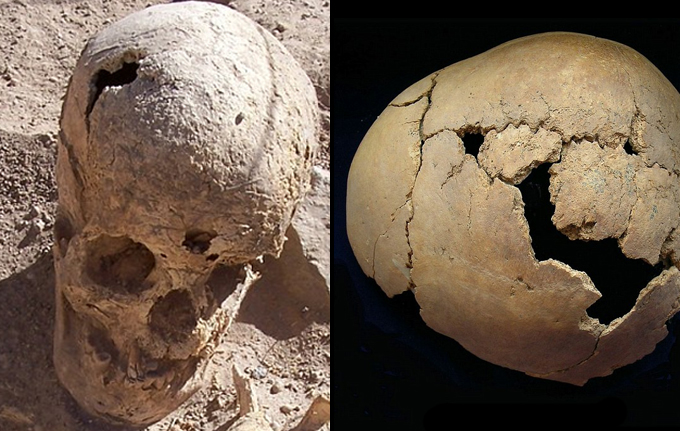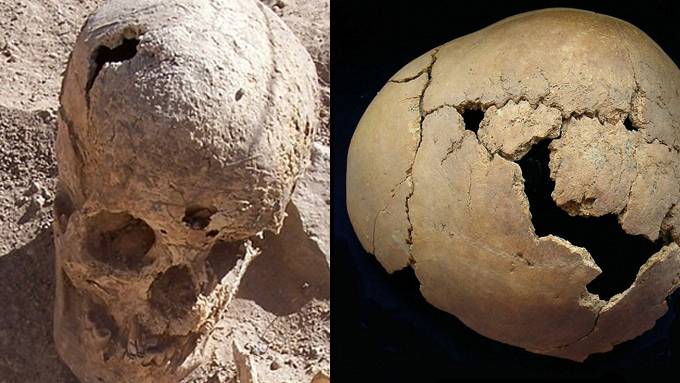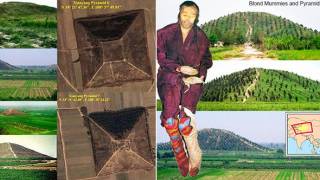Death Rituals of Ancient Peru: 1,200-Year-Old Tombs With Hundreds of Dismembered Mummies Found
Source: dailymail.co.uk

Gruesome death rituals performed 1,200 years ago have been uncovered in dozens of tombs in Peru's Cotahuasi Valley.
Each tomb was filled with bones of up to 60 mummies, with infants kept in small containers, and others repeatedly ripped to pieces while decomposing.
Archaeologists have so far opened up seven of the tombs, recovering 171 broken mummies from the ancient ceremonial site known as Tenahaha.
'When we think of the dead, we bury the relative and that's it,' Justin Jennings, a curator at Toronto's Royal Ontario Museum told DailyMail.com.
'But back then, in the Andes, you continued to interact with those folks. People were moving bodies around all the time.'
The mummies in the tombs ranged in age from several days old to the elderly. But over the years rats had eaten away many of the remains, leaving only fragments.
In one tomb, researchers discovered 400 isolated human body parts, including teeth, hands and feet.
The few mummies that remained intact were bound by rope and placed in a foetal position.
'On occasion, there were mummies that were placed as offerings around the outside of the tombs,' said Jennings.
'They were broken apart but then placed back together in an anatomically correct position.'
Scientists are still trying to understand why some of the mummies and artefacts were broken up in this way.
One theory is that the movement of the mummies may have helped create a sense of equality among the community.
There is also evidence that the rituals went on for days at a time, with parties being held in the valley below the tombs.
Jennings said that the dead, likely numbering in the low thousands, towered over the living from in their tombs high on the hills around the valley.
'It seems to be a place where people were bringing down their dead to that location,' said Jennings.
'They were having parties. There is evidence that they were making and drinking corn beer, and placing offerings underneath them.'
But he adds that the picture remains blurry, as the rituals were performed over many years, and likely changed during that time.
A study of pottery at the site suggests it was used between about A.D. 800 and A.D. 1000, with the Inca settling there 500 years later.
Tenahaha was believed to have been a relatively peaceful area in Peru during those years.
The wider area, however, was undergoing dramatic change, with populations growing, agriculture expanding and class differences emerging.
At this time, the Wari was being established in the south-central Andes and coastal area of modern-day Peru.
And with it came widespread violence. Skull fragments on the islands close by revealed that 50 per cent had dents in their heads caused by violent blows.
Pottery in these areas were etched with drawings of fanged teeth and human trophy skulls.
In Tenahaha, only one per cent of skulls had dents. The pottery at the site is also decorated with what looks like depictions of people smiling.
Jennings believe Tenahaha may have served as a 'neutral ground' where people could bury their dead and feast.
'We have finished the excavations, and we're now trying to look at a different sites nearby during the same period to understand the relationship,' Jennings added.
Source: dailymail.co.uk
Tombs Filled with Dozens of Mummies Discovered in Peru
By Owen Jarus | livescience.com
Dozens of tombs filled with up to 40 mummies each have been discovered around a 1,200-year-old ceremonial site in Peru's Cotahuasi Valley.
So far, the archaeologists have excavated seven tombs containing at least 171 mummies from the site, now called Tenahaha.
The tombs are located on small hills surrounding the site. "The dead, likely numbering in the low thousands, towered over the living," wrote archaeologist Justin Jennings, a curator at Toronto's Royal Ontario Museum, in a chapter of the newly published book "Tenahaha and the Wari State: A View of the Middle Horizon from the Cotahuasi Valley" (University of Alabama Press, 2015).
Before rigor mortis set in, the mummies had their knees put up to the level of their shoulders and their arms folded along their chest, the researchers found. The corpses were then bound with rope and wrapped in layers of textiles. The mummies range in age from neonate fetuses to older adults, with some of the youngest mummies (such as infants) being buried in jars. While alive the people appear to have lived in villages close to Tenahaha.
Bits and pieces of mummies
The mummified remains were in poor shape due to damage from water and rodents. Additionally, the researchers found some of the mummies were intentionally broken apart, their bones scattered and moved between the tombs. In one tomb the scientists found almost 400 isolated human remains, including teeth, hands and feet.
"Though many individuals were broken apart, others were left intact," Jennings wrote in the book. "People were moved around the tombs, but they sometimes remained bunched together, and even earth or rocks were used to separate some groups and individuals." Some grave goods were smashed apart, while others were left intact, he said.
Understanding the selective destruction of the mummies and artifacts is a challenge. "In the Andes, death is a process, it's not as if you bury someone and you're done," Jennings told Live Science in an interview.
For instance, the breakup and movement of the mummies may have helped affirm a sense of equality and community. "The breakup of the body, so anathema to many later groups in the Andes, would have been a powerful symbol of communitas (a community of equals)," wrote Jennings in the book. However, while this idea helps explain why some mummies were broken up, it doesn't explain why other mummies were left intact, Jennings added.
A changing land
Radiocarbon dates and pottery analysis indicate the site was in use between about A.D. 800 and A.D. 1000, with the Inca rebuilding part of the site at a later date.
Tenahaha, with its storerooms and open-air enclosures for feasting and tombs for burying the dead, may have helped villages in the Cotahuasi Valley deal peacefully with the challenges Peru was facing. Archaeological research indicates that the villages in the valley were largely autonomous, each likely having their own leaders.
Research also shows that between A.D. 800 and A.D. 1000 Peru was undergoing tumultuous change, with populations increasing, agriculture expanding and class differences growing, Jennings said. At sites on the coast of Peru,archaeologists have found evidence for violence, with many people suffering cranial trauma (blows to the head), Jennings said. In some areas of Peru, scientists have found pottery containing drawings of fanged teeth and human trophy skulls (skulls that could have been taken in battle) the researchers note.
At Tenahaha, however, there is little evidence for violence against humans, and pottery at the site is decorated with what looks like depictions of people smiling, or "happy faces," as archaeologists referred to them.
Tenahaha may have served as a "neutral ground" where people could meet, bury their dead and feast. As such, the site may have helped alleviate the tensions caused by the changing world where these people lived, Jennings said.
"It's a period of great change and one of the ways which humans around the world deal with that is through violence," Jennings said in the interview. "What we are suggesting is that Tenahaha was placed in part to deal with those changes, to find a way outside of violence, to deal with periods of radical cultural change."
Excavations at the site were carried out between 2004 and 2007 and involved a team of more than 30 people from Peru, Canada, Sweden and the United States.
Source: livescience.com






















